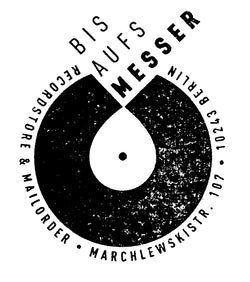In the lockdown of early 2020, Berlin fell silent. As reflects Nicholas Bussmann, “it felt like the early 90s in East Berlin”, the place where he grew up and experienced social change and uncertainty, and presumably a lot of empty, silent space.
Here, on this duo with his long-term accomplice Werner Dafeldecker, we hear the sound of two instrumental practitioners as they explore the nature of their respective instruments with a paced and thoughtful guidance, with little intervention or overt demonstration of virtuosity. What we witness is more a kind of study into sonority, allowing the instrument to be, listening with caution to every scrape and tap, much in the spirit of Pablo Casals, who notoriously instructed his students to “put air around their instrument”.
The instruments are stripped and relieved of their duty to produce “music”. They are left to wheeze, toss, twist and turn in a somnambulant, confused and apocalyptic space where each creaky resonance brings to mind the atmosphere of tragedy that pervades Fellini’s Orchestra Rehearsal (1978), where the musicians are hostages in a theatre, indefinitely trapped in isolation, with no audience to play to. The psychodrama plays out through scenarios of despair and questioning of purpose, as sonic and social lines are blurred and the medium of music becomes a metaphor for the conundrum of compositional performance.
When the dust of music settles, what remains are the sounds of the surfaces, the scrapes, squeaks and abrasions. The two performers engage in a tactile re-learning of sound, teaching each other new airs, free of any kind of obligation to espouse established narratives or politics. Imagine that, for centuries, the violoncello and contrabass have been enduring the physical strain and mental stress of being hauled to places near and far to perform the great histrionic symphonies, the frantic jazz routines. Now, in 2020, on an indefinite sabbatical by courtesy of the worldwide pandemic, they are raised from their cases like sleeping giants, dusted off and groomed by their keepers who look to re-socialize and rehabilitate them back into their functioning roles as audible tools in a musical/sonic language by exploring the peripheries of their sonic potential.
In recent years, Dafeldecker and Bussmann have made a name for themselves with work that critically and inquisitively reflects on the medium of music and, to some extent, the anxiety of meaning and purpose of sound-making processes – research as practice, practice as research as a language onto itself. Here, there are hints of Dafeldecker’s long-standing involvement in the Viennese Polwechsel project, a consortium dedicated to scratching at the very edges of formal music, questioning the extent and limitations of classical instrumentation and ensemble formations by experimenting with extended techniques. As for Bussmann, he has of late ventured into instruction-based vocal ensemble performance artworks for public participation, as in his radical The News Trilogy / Revolution Songs in an AI Environment. The reason for expanding his approach was that he had come to question improvised music, which he felt was biased towards what he calls “a certain acoustic dress code”: “It becomes very much like a scene with its fashions. Instructions or as Nicholas Bussmann prefers to say: Algorithms, on the other hand, can provide a framework for musicians from very different backgrounds to make music together.”
Other algorithm-based works include performances and installations for robot piano and his ongoing work with the project Kapital Band 1, a duo he forms with Martin Brandlmayr. In their third album, Internationale Solidarität (also released on Ni-Vu-Ni-Connu), they explore the possibilities of improvising music with machines, the parallel existences and mimetic affirmations of machine structures and human patterns, a search between impulse and logic that embraces mistakes as an integral part of the process.
The backdrop to the music on Monte Carlo Fallacy is a canvas of subtle noises – of the room, the muted city’s weather patterns, the performers’ breathing, the shuffling of their feet on the floor of Bussmann’s Grand Prix d’Amour studio. They infuse the recording with the real-time, high-fidelity integrity of live music unencumbered by the tropes of technology and post-production. This is a poetic demonstration of what the resonating string instrument can do – nothing more, nothing less. One is reminded of the string quartets of Harley Gaber, which are so quiet that in the bucolic recording environment of his winter log cabin the instruments are scarcely audible, embedded in the woody resonance and atmospheric hush of the near-silent room.
—Dean M. Roberts
Nicholas Bussmann, cello
Werner Dafeldecker, double bass

